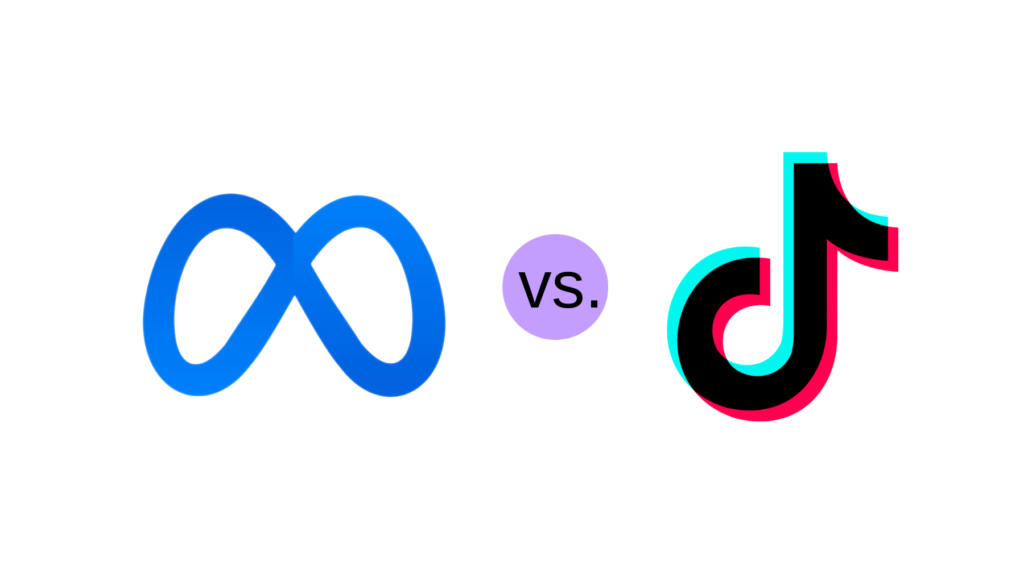In today’s fiercely competitive e-commerce landscape, capturing audience attention and driving conversions is paramount. Social media advertising stands as a critical battleground, leaving many retail businesses to question: Which platform offers the greatest advantage – TikTok or Facebook? Both platforms present unique strengths and cater to distinct demographics, making the decision far from straightforward.
Should you commit to Facebook, dive into TikTok, or, perhaps, embrace a combined strategy? Let’s explore.
Understanding the Core Differences
For advertisers, grasping the fundamental differences between TikTok and Facebook/Meta ads is crucial. A well-informed strategy tailored to each platform is key to success. The optimal choice hinges on clearly defined objectives, a deep understanding of your target audience, creative capabilities, and budgetary constraints. Consider a multi-channel approach, leveraging both TikTok and Facebook to broaden your reach and achieve comprehensive marketing goals, with each platform playing a specific role throughout the customer journey.
The Power of Facebook Ads
Facebook ads offer several compelling benefits for e-commerce businesses:
Massive Reach:
Boasting nearly 3 billion monthly active users, Facebook provides unparalleled access to a vast pool of potential customers. Meta’s ownership of Instagram expands this reach even further, offering seamless cross-advertising to an additional 2 billion users.
Precision Targeting:
Facebook’s advanced advertising algorithm allows for highly precise targeting. You can segment audiences based on demographics like age, interests, location, and behaviors.
The Meta Pixel is critical for successful e-commerce advertising. It enables targeting based on specific website actions, such as adding items to cart, making purchases, or viewing specific product pages. Creating lookalike audiences based on Meta Pixel data is another powerful tactic, allowing you to reach users with similar characteristics and behaviors to your existing customers.
A/B Testing and Analytics:
Facebook’s built-in A/B testing features within the Meta Ads Manager provide invaluable insights into what resonates with your audience. Furthermore, the platform’s robust tracking and analytics tools offer data-backed insights to refine your strategies.
Proven ROI:
Many e-commerce businesses have achieved a strong return on investment (ROI) with Facebook ads, solidifying its position as a favorite among advertisers.
The Challenges of Facebook Ads
Despite its strengths, Facebook advertising also presents challenges:
Steep Learning Curve:
The platform can be time-consuming to learn, with a significant amount of manual work required, which can be daunting for new advertisers.
Rising Costs:
The increasing costs associated with Facebook ads can be a concern, potentially posing challenges for smaller businesses with limited budgets.
Ad Fatigue:
The sheer volume of ads on Facebook can lead to ad fatigue, reducing user responsiveness to marketing messages.
Complex Policies:
Facebook’s intricate ad policies and stringent rules can be challenging, as non-compliance can result in ad rejections or account bans.
Privacy Concerns:
Evolving privacy concerns and changes in ad targeting options can limit the ease of reaching specific audiences.
The Allure of TikTok Ads
TikTok offers its own set of compelling advantages for advertisers:
Unique Audience:
TikTok provides access to an audience often missed by other platforms like Facebook and Instagram, particularly in regions where those platforms have less influence.
Youthful Demographic:
With a predominantly young user base, TikTok is ideal for businesses targeting Gen Z and Millennials. The platform’s engaging, short-video format allows for the creation of compelling ad content that resonates with this energetic audience.
Cost-Effective Reach:
TikTok often offers more budget-friendly CPM and CPC rates, enabling advertisers to reach a substantial audience at a reasonable cost.
Influencer Marketing:
Like Instagram, TikTok facilitates influencer marketing, allowing businesses to collaborate with creators and leverage their influence to produce captivating content that aligns with brand values.
The Limitations of TikTok Ads
It’s important to acknowledge the limitations of TikTok advertising:
Limited Resources:
As a relatively new platform, TikTok lacks the extensive guides and information available for more established platforms, which can hinder advertisers.
Ad Format Variety:
Compared to platforms like Facebook, TikTok offers fewer ad formats, limiting options for content diversification (though new formats are continuously being added).
Basic Analytics:
TikTok’s analytics tools are still developing, offering less robust insights compared to more mature platforms.
Demographic Skew:
The user base on TikTok skews heavily towards a younger demographic, potentially limiting its effectiveness for businesses targeting older audiences.
Budget Minimums:
While TikTok ads can be cost-effective, certain programs or features may have high minimum budget requirements.
| Features | Facebook ads | TikTok ads |
|---|---|---|
| User Base | Nearly 3 billion monthly active users + seamless access to Instagram’s users | Predominantly youthful user base: Gen Z and Millennials |
| Targeting | Detailed targeting algorithm, precise audience segmentation. Available targeting via Meta Pixel for specific actions | Less advanced targeting |
| Costs | Increasing costs associated with Facebook ads – might be a challenge for smaller businesses with limited budgets. | Cost-effective CPM and CPC rates for reaching a substantial audience |
| Ease of Use | Time-consuming setup process. Manual work may pose a hurdle for new advertisers | Lack of comprehensive guides and information available online |
| Strengths | Built-in A/B testing features and proven good ROI | Great for creative content and influencer marketing |
TikTok vs. Facebook: Key Metric Differences
A closer look at key advertising metrics reveals significant differences between Facebook and TikTok: ad formats, targeting options, and ad costs (CPM, CPC, CTR, and ACR).
Ad Formats
- Facebook: Offers a diverse range of ad formats, including photo ads, video ads, carousel ads, and collection ads, allowing businesses to showcase products and tell stories.
- TikTok: Provides ad formats like Native ads, Branded content, TopView ads, and Spark ads. Campaigns can be optimized for purchases with the “Complete Payment” option.
The choice of ad format should align with your business goals and target audience to maximize engagement and conversions.
Targeting
- Facebook: Excels with advanced targeting capabilities, allowing businesses to reach users based on demographics, location, interests, behaviors, and connections. Custom and Lookalike Audiences further enhance targeting precision.
- TikTok: Offers targeting based on demographics, location, interests, and device type, along with Custom Audiences and Interest Targeting.
Facebook’s more sophisticated targeting options give it an edge in reaching specific audiences.
Ad Costs
- Cost Per Mille (CPM): Facebook’s CPM averages around $6.97, while TikTok’s CPM averages around $3.21 (varying based on ad format).
- Cost Per Click (CPC): Facebook’s CPC averages around $1.84, while TikTok’s CPC averages around $1.63.
- Click-Through Rate (CTR): Facebook boasts a higher average CTR of 1.07% compared to TikTok’s 0.84%.
- Average Conversion Rate (ACR): Facebook’s ACR varies considerably (2% to 15%), while TikTok’s ACR is estimated to be between 1.5% and 3%.
| Metric | Facebook ads | TikTok ads |
|---|---|---|
| Ad Formats | Photo, Video, Carousel, Collection | Native, Branded content, TopView, Spark |
| Targeting | Advanced targeting based on demographics, location, interests, behaviors, connections, Custom Audiences, Lookalike Audiences | Targeting based on demographics, location, interests, device type, Custom Audiences, Interest Targeting |
| CPM | Average of around $6.97 | Average of around $3.21, varying based on ad format |
| CPC | Approximately $1.84 | Approximately $1.63, varies by ad format |
| CTR | Average of 1.07% | Average of approximately 0.84% |
| ACR | Varies from 2% to 15% | Expected range of 1.5% to 3% |
TikTok or Facebook: Which is Right for Your E-commerce Business?

While TikTok excels in generating impressions and potentially offering lower costs, Facebook demonstrates higher CTRs and conversion rates.
Facebook’s ad platform offers versatility, while TikTok relies on engaging video content. The optimal choice hinges on your specific objectives, target audience, creative capabilities, and budget.
Rather than viewing them as mutually exclusive, consider that Meta and TikTok can be used together to achieve different goals across the entire customer journey.
Embrace the Multi-Channel Strategy
A combined approach, leveraging both Facebook and TikTok, can significantly amplify your reach and impact.
TikTok is ideal for creating engaging video content that sparks interest in your brand, while Facebook excels at targeting specific groups and driving conversions.
By strategically utilizing both platforms, you can create a comprehensive marketing strategy that maximizes the unique strengths of each.
- Younger vs. Older Audiences: TikTok Ads are particularly effective for reaching younger audiences and promoting e-commerce products through engaging content. Facebook Ads are well-suited for older demographics and higher-priced products.
To maximize performance across all channels:
- Know Your Audience: Understand your target audience’s needs and preferred social media platforms.
- Research Platforms: Research popular e-commerce and social media platforms.
- Assess Competitors: Analyze your competitors’ presence and activity on different platforms.
- Consider Product Type: Tailor your platform choices to the products you sell.
- Budget Wisely: Assess your budget and resources for managing multiple channels.
- Integrate Channels: Explore options to integrate multiple channels for seamless product promotion and selling.
- Use Multichannel Tools: Implement a multichannel marketing tool to manage and optimize product listings.
- Start Selling!
Streamline Your Advertising with a Multi-Channel E-commerce Platform
To effectively advertise on both Facebook and TikTok, consider using a multi-channel e-commerce platform with feed management capabilities. Such a solution facilitates seamless integration, allowing you to efficiently create, manage, and optimize product listings tailored to each platform’s unique audience and engagement dynamics.
Centralized analytics and reporting provide comprehensive insights into campaign performance, enabling data-driven decision-making and continuous improvement.
Conclusion
The debate between TikTok ads and Facebook ads is a dynamic one, with both platforms offering distinct advantages.
The optimal choice depends on your target audience, brand goals, and the ability to leverage each platform’s strengths. The most effective solution may very well be to harness the power of both TikTok and Facebook in a synergistic, multi-channel strategy.



